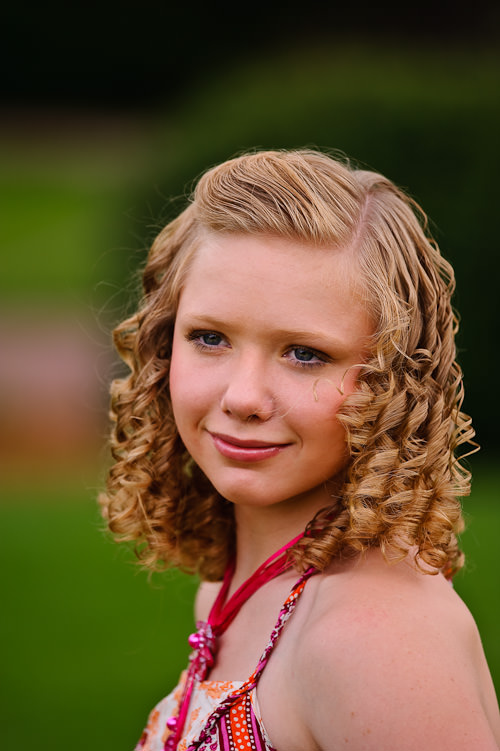Why would you pick DSLR versus Point and Shoot Camera or even vice-versa? As DSLRs are becoming a growing number of affordable, a lot of people are wondering when it is time for them to switch to a DIGITAL SLR and toss their point plus shoot cameras. Nowadays, point plus shoot cameras have a long list associated with features and capabilities, compared to also slightly older versions. GPS, face-detection, smile detection and many other new technology are making their way into the stage and shoot market, over-saturating this with new cameras and which makes it more difficult for people to choose the right digital camera for their needs. A similar thing is also occurring in the DSLR world, where producers are dividing the market into several segments, trying to capture a range of prospective customers: from entry-level to advanced expert. But one thing for sure – there are numerous people, who are stuck in the middle, aiming to decide whether they want to stay with their own point and shoots, or chew the bullet and switch to the DSLR.

In this article, I will feel the advantages and disadvantages of both DSLRs plus point and shoots, so that you can assess what’ s best for your needs plus make the right decision. So , in case you are one of those people who are stuck in the middle, this informative article is for you.
Anyhow, let’ s analyze the advantages of stage and shoot cameras:
- First and foremost, it is the Size . You can just slip them into your pocket plus carry them anywhere. Heck, a few of the new phones have excellent digital cameras and you don’ t even require a dedicated point and shoot digital camera anymore… hitting those ski slopes and keeping good memories is a lot easier than ever.
- Weight. The majority of point and shoot cameras are extremely light weight. You do not need extra bags, tripods or other accessories to carry close to. There are, however , advanced “ SLR-like” point and shoot cameras that will tend to get bigger and bulkier, because of their super zoom capabilities.
- Fixed lens. All point plus shoot cameras come with fixed lens. You don’ t sweat within trying to change lenses.
- Massive Depth of Field . In layman’ s terms, it means that point plus shoot cameras typically cannot individual foreground from background, bringing every thing in focus and making the whole scene look sharp. This could be each good and bad.
- Price. The point-and-shoot camera is always going to end up being cheaper to purchase and maintain than a DIGITAL SLR.
Disadvantages associated with point and shoot cameras:
- High quality. Due to the smaller sized size of the camera sensor, stage and shoots are no go with to DSLRs when it comes to image high quality, even with more Megapixels.
- Downside of a large level of field. While a point and shoot will get your entire scene nicely in concentrate, there is not much you can do to separate your subject from the background plus make it look soft and fuzzy. With DSLR cameras and particular lenses, you can get a very shallow level of field and completely separate your foreground from the background.
- Adaptability. Point and take cameras are not upgradable. You cannot alter their lenses or mount exterior flashes (with the exception associated with some high-end models) and the variety of external accessories is limited to the brand name and make of the camera.
- Limited manage. Unlike Digital slrs, point and shoot cameras provide much less control over the process of taking pictures. In lots of compact point and shoot digital cameras, there is very limited control over aperture plus shutter speed, there is no distance tagging on the lens and the cameras are usually tougher to control in manual setting.
- Capturing in the dark. Compact cameras do not have good capabilities to get night photography.
- Inability to capture wide-angle shots. Many point and shoot cameras have got lenses that start at 30-35mm, meaning that you cannot fit much of the picture and would have to stand back to catch more.
- Most stage and shoot cameras are restricted in how fast they can catch an image. Point and shoots aren't designed for sports and action picture taking.

Now, let’s talk about the main advantages DSLRs:
- Much better image quality. A DSLR camera typically includes a much bigger sensor than a stage and shoot camera – a place and shoot typically has a messf¨¹hler area that is only about 3-5% of the full frame DSLR sensor. Creating a big sensor helps to get pictures that have much less noise (noise will be the grain you typically see inside a picture) and much better overall picture quality.
- Better sensitivity to light. Less noise implies that you can work in very dim conditions and capture photographs that you would not be able to with a point and take camera.
- Shutter and focus speeds. DSLRs can obtain focus very quickly and take several shots per second. Professional Digital slrs are capable of capturing up to 10 fps. All professional action and sports activities photography is done with SLRs.
- You see that which you shoot . A DIGITAL SLR is constructed with reflex mirrors, meaning that you look through the lens, rather than see-through hole in the camera.
- Flexible Regulates. DSLRs are certainly not necessarily created for “ simplicity” since many point and shoots are. Therefore , you will typically find a lot more control keys and controls on a DSLR compared to on a point and shoot. Once you understand how to use those controls, you can quickly alter settings, if necessary.
- Better investment. Generally, DSLR cameras keep their values much better than point plus shoots. Although no digital camera can be viewed as a good investment, chances of selling your DIGITAL SLR at a reasonably good price are higher than even a slightly used stage and shoot camera. Our Nikon D80 that we first bought has been sold for about 10% less than what we should bought it for after a year associated with moderate use.
- Ability to use different lens. There is a large array of lenses that can be mounted plus used on DSLRs, from super broad angle to telephoto, depending on your requirements. My husband uses long telephoto lens such as the Nikon 300mm f/4. 0 for his bird photography, whilst I primarily shoot with family portrait lenses such as the Nikon 50mm f/1. 4. On point and locations, you are limited to the “ optic zoom” of the camera lens. DIGITAL SLR lenses are also much better optically when compared with lenses in point and capture cameras.
- Full control over depth of field . You are fully responsible for isolating foreground from background or even bring everything in focus by means of aperture control of the lens. Several portrait and telephoto lenses really can isolate your subjects and create the creamy and beautiful background blur , also referred to as “ bokeh “.
- Weather sealing. Forget about using a point and capture in challenging weather conditions. While stage and shoot cameras are only suited to normal use, higher-end DSLRs may withstand dust, moisture, rain plus snow and severely cold weather. My hubby often shoots landscapes in subzero temperatures with his DSLR and he has not had a problem with it.
- Solid construction. DSLRs are built in order to last. While there are some parts which are made of tough plastic, the expert DSLRs are made of magnesium-alloy and can have a lot of physical abuse, while stage and shoots would quickly breakdown.

Problem with owning a DSLR:
-
- High price tag. DSLR cameras are more costly than point and shoot digital cameras. Even an used, entry-level DSLR is most likely going to cost more than an advanced stage and shoot. But the expense will not stop with the camera – great lenses typically cost more than the digital camera itself and you will have to cash out upon other accessories (larger camera luggage, filters, memory cards, etc). To get going, an entry-level camera with a package lens will cost you anywhere between $500-800. That’ s just the initial cost. Overtime, you might spend three times as much upon accessories alone.
-
- Complexity. DSLR cameras are quite complicated to work with. Once you buy a DSLR, you will have to invest a lot of time to learn the main functions and figure out what all the control keys do. Some people get easily disappointed with this process. With a DSLR, you will need to learn how to be patient.
-
- Ongoing maintenance. The cost of maintenance on the DSLR is much higher than on a stage and shoot. The camera messf¨¹hler can get dirty and dust will get into lenses. While all producers have some sort of a warranty time period, there is no guarantee that things help keep on working when the warranty runs out. Obviously, the cost of repair on Digital slrs and lenses can get outrageously costly. You will have to learn how to care for your digital camera and lenses to prevent dust build up and other mechanical problems.
-
- Weight and Size. These babies are usually big and heavy! It required a while to get used to the size as well as the weight of my camera. Our neck would hurt so terribly from carrying the camera about. We ended up purchasing special connectors to ease the pain. Weight also causes it to be hard to hold the camera still and you may have to learn how to properly hold this to have less blur in your photos.
-
- Noise. Because of the nature of DSLRs and their own construction, every time the shutter starts and closes, there is a substantial quantity of noise that comes out of the digital camera. Some newer cameras now have an unique “ Quiet” mode (such because Nikon D600), which helps reduce the noise.
I am not going to ask if you’ ve reached the limit of the point and shoot camera, due to the fact most likely, you haven’ t. Individually, I used to shoot everything in car mode, trusting the camera to carry out all the work for me. I didn’ big t think about the settings or functions and also to be honest, I don’ to even remember changing any digital camera settings, because I didn’ capital t care. If a picture didn’ to come out right, I would always fault the camera, thinking that only a DIGITAL SLR would produce a better image. Since I know how to use a DSLR, each once in a while when I get a hold of a point plus shoot, I realize that it was myself who didn’ t know how to get pictures, not the camera. Yet owning a DSLR pushed me to understand photography and get to know the basics for example ISO , aperture and shutter speed . I didn’ t think about any of those prior to, because they were all pre-determined for me personally by my simple and easy to use stage and shoot.
Therefore , keeping in mind all your needs, ask yourself these types of simple questions to find out if you actually need a DSLR:
-
- Feel I ready to invest my period and a considerable amount of money into a DIGITAL SLR?
-
- Am We willing to learn about photography and the digital camera?
-
- Do I require a more advanced camera for more than just household pictures?
-
- May my business or family take advantage of this purchase?
Then weigh in the advantages and disadvantages from your above list and see what you are usually leaning to. If you are leaning in the direction of purchasing a DSLR, please take a look at our husband’ s DSLR purchase guide . He or she gives nice pointers on what to pay for attention to while purchasing a new digital camera. Oh, one more thing, do NOT toss your own old point and shoot, since you might need it someday!
 NIKON D700 @ 110mm, ISO 400, 1/800, f/4. 0
NIKON D700 @ 110mm, ISO 400, 1/800, f/4. 0
The following is my quick story to end this short article:
As a mom of two children, it is very important to preserve my family memories in kinds of pictures. I always wanted to have a large album, full of beautiful pictures associated with my family for us to go back and look with in the future. I didn’t think about digital cameras or lenses, because I thought that when I wasn’ t able to catch those special moments with the point and shoot camera, I really could always hire a photographer to consider our pictures. But soon after, I actually realized that there are too many of those unique moments that happen in our life (first smile on my child’ s face, first walk, and so forth ) and it is not always practical plus, in some cases impossible, to hire a professional photographer to save those memories. While looking to document those moments with what I got, I quickly started getting disappointed with bad pictures and reminiscences that were lost forever. I was obtaining tired of thinking “ I want that image was better” or even “ I wish it was less blurry” and really wanted to do something about this. Two years ago, my husband and I finally made a decision to upgrade to a DSLR and am grateful that we did, since not only am I able to photo my family and my kids, but also, I usually had a passion for photography and am now have the right tools to fulfill the dream of becoming a professional photographer.
If you have enjoyed this post, please check out our in-depth Level 1 Photography Essentials Course , where we discover all the basics of photography within much more detail. It is an intensive, 5+ hour course with enough materials to not only get you started nowadays, but also to serve as a reference point material in the future.

